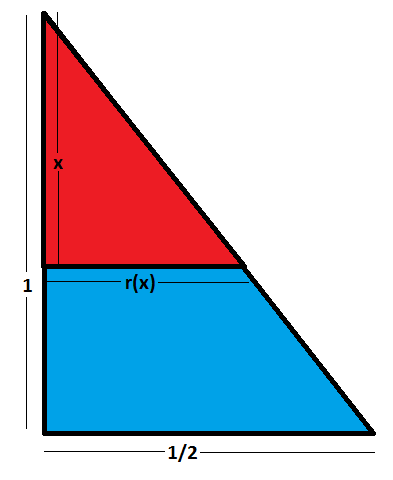Science:Math Exam Resources/Courses/MATH101/April 2010/Question 04
{{#incat:MER QGQ flag|{{#incat:MER QGH flag|{{#incat:MER QGS flag|}}}}}}
• Q1 (a) • Q1 (b) • Q1 (c) • Q1 (d) • Q1 (e) • Q1 (f) • Q2 (a) • Q2 (b) • Q2 (c) • Q3 (a) • Q3 (b) • Q3 (c) • Q3 (d) • Q4 • Q5 (a) • Q5 (b) • Q5 (c) • Q6 • Q7 • Q8 • Q9 •
Question 04 |
|---|
|
Full-Solution Problem. Justify your answer and show all your work. Simplification of the answer is not required. A colony of ants builds an anthill that is in the shape of a cone whose base, at ground level, is a circle of diameter 1 ft and whose height is also 1 ft. How much total work, in ftlbs, is done by the ants in building the anthill? For the density of sand, use the value |
|
Make sure you understand the problem fully: What is the question asking you to do? Are there specific conditions or constraints that you should take note of? How will you know if your answer is correct from your work only? Can you rephrase the question in your own words in a way that makes sense to you? |
|
If you are stuck, check the hint below. Consider it for a while. Does it give you a new idea on how to approach the problem? If so, try it! |
Hint |
|---|
|
Split the cone up into cylinders with infinitely small height and add up the volume of these cylinders using integration. |
|
Checking a solution serves two purposes: helping you if, after having used the hint, you still are stuck on the problem; or if you have solved the problem and would like to check your work.
|
{{#incat:MER CT flag||
}}















![{\displaystyle {\begin{aligned}{\text{work}}=\int _{0}^{1}{\textrm {d}}W&=\int _{0}^{1}{\frac {150\pi }{4}}x^{2}\,(1-x)dx\\&=\left[{\frac {150\pi x^{3}}{12}}-{\frac {150\pi x^{4}}{16}}\right]_{0}^{1}\\&={\frac {150\pi }{12}}-{\frac {150\pi }{16}}\\&={\frac {25\pi }{8}}\end{aligned}}}](https://wiki.ubc.ca/api/rest_v1/media/math/render/svg/a073186632623087bf5b3c20b8f41f0211a722fb)






